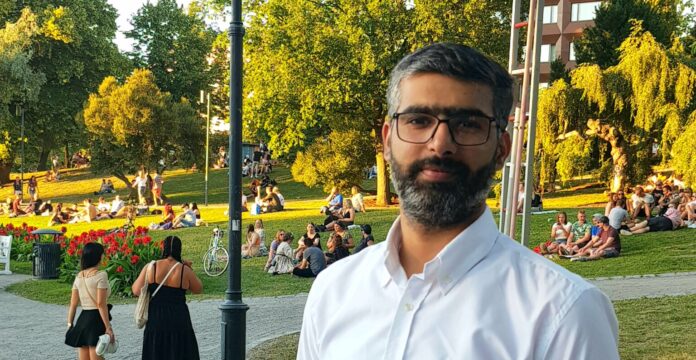Sniazhana Ana Sniazhko is a doctoral researcher in the School of Management and Public Administration at the University of Vaasa and is currently writing her Doctoral thesis on uncertainty management in cross-border mergers and acquisitions.
I attended Junction as part of a team of five enthusiasts sent to the event by the University of Vaasa. Our team had been put together by two research platforms: Digital Economy and InnoLab. The Directors of those platforms, Heidi Kuusniemi and Mari K. Niemi, were guiding and supporting us. As a team, we had knowledge of and skills in programming, software development, coding, business process modelling and entrepreneurship.
At the event, we had to solve, or hack (as it was trendy to say at Junction), Daimler’s Fleetboard Challenge. Over the course of 48 hours, we had to create an application for a navigation solution. Our app was designed to complement driving by offering a seamless interaction between it and a truck driver.
Looking back, I can definitely say that we had a great time, although it did not seem like that all of the time. We experienced moments of stress and frustration alongside ones of hope and excitement. Nevertheless, the most important feeling we shared was one of fulfilment: we created a working solution for an existing problem.
In every way possible, Junction is a fantastic event, and I will list the aspects that I appreciated the most.
The dedication of the students.
I observed two kinds of participants during the event. The first group was made up of student organisers. The whole event was organised by students, for students. From the facilities to the communication channels, the peer evaluation app, the entertainment and more, everything worked smoothly and every participant was taken care of. The organisers deserve a round of applause!
The second group of enthusiasts was made up of student participants, who came from all over the world. Their excitement, and their passion for ideas, was palpable throughout. One team spent all of its time – one day and two nights – developing a website without breaking for sleep. When I approached the team members and asked about the site, they eagerly demonstrated the new features they had made. Their exhaustion was nothing compared to the rush of creating something new.
The dedication of the company representatives.
Nowadays, it is not a novelty to see company representatives at student events. However, this time it involved more than free sweets and posters.
The dedication of the representatives, who created challenges, presented them to participants and constantly interacted with students working on solutions, created a fantastic environment that fostered knowledge exchange and co-creation.
I was thrilled to see managers from different companies throughout the event (they even stayed overnight!), and they made themselves available to participants. When companies are enthusiastic, participants excited to contribute.
Machine learning is everywhere.
When we submitted our solution to the company for review, I got the chance to interact with other teams and look at the solutions they had created. They included an app for mood recognition in social media, a playlist that automatically adjusted to the weather, games to maintain factory facilitators’ concentration levels and blockchain solutions for transparency in tax allocation.
What struck me most was that the majority of the applications and technical solutions were based on machine learning. This meant that the applications operated using computer systems that were able to progressively learn from data, identify patterns and make decisions, all with minimal human intervention.
You can decide whether machine learning is good or evil, but one thing is for sure: it is powerful. We are living through the fourth industrial revolution, and it is our responsibility to at least glimpse what machine learning is, how it works, its capacity and the possible consequences.
To conclude, Junction is a must-see event. At least once in your lifetime, you should attend as a student, university researcher or a company representative. Paradoxically, it is exhausting in terms of the mental work and energy required to solve the challenges, yet, in terms of the learning experience, it is restorative.
University of Vaasa team, Junction 2018
- Pankaj Kela. Research area: Organization of energy storages (batteries) in smart grids, algorithms for optimal co-ordination of energy storages in a decentralized way.
- Raja Marthala. Research area: Indoor navigation: a machine learning approach.
- Thileepan Paulraj. Research area: Renewable energy, automated wind turbine noise identification system, solving problems that atmospheric icing creates for different industries.
- Mohammad Saffaf. Research area: Industrial digitalization
- Sniazhana Sniazhko. Research area: Uncertainty management, organizational change management, mergers and acquisitions, human resource management
Team supporters
- University of Vaasa research platforms Digital Economy and Innovation and Entrepreneurship InnoLab
- Directors Heidi Kuusniemi and Mari K. Niemi



